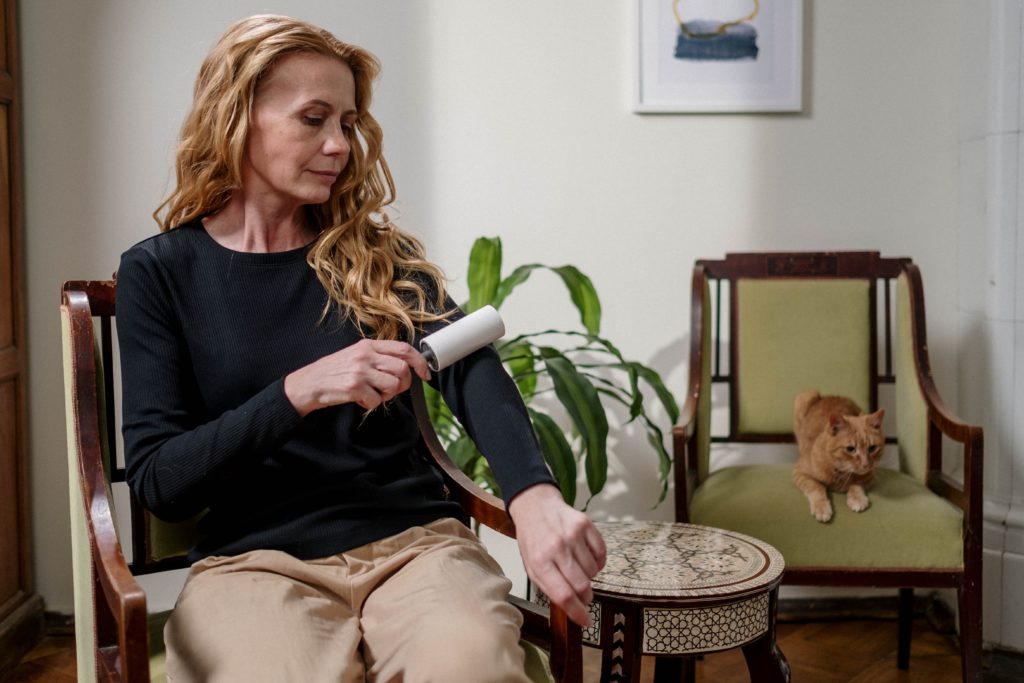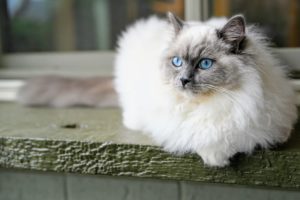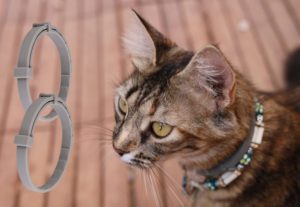How to reduce cat shedding is one of the most common questions of cat owners. Dealing with shedding can be a significant challenge. It isn’t very pleasant to have cat hair clinging to everything. While cats are great companions, struggling with their shedding fur is common. Shedding is natural for cats, but excessive shedding may indicate health problems or inadequate care.
In this blog post, we summarized Dr. Andruw Jones, former practicing veterinarian, recommendations on reducing cat shedding and keeping your home fur-free and your feline friend healthy.
Why Do Cats Shed?
Before we jump into the tips, let’s briefly understand why cats shed their fur. Shedding is part of a cat’s life cycle, and it serves several purposes, including:
1. Temperature Regulation:
Cats have a unique way of adjusting to changes in temperature. They shed their fur to regulate their body temperature, which helps them stay cool in the summer and warm in the winter.
When the weather gets warmer, cats shed their heavy winter coats to reduce their insulation and allow for better airflow. And when the temperature drops, they grow thicker coats to trap heat and stay warm.
2. Skin Health:
Regular shedding is a natural process for cats that helps them maintain healthy skin and fur. It is important to note that shedding is a way for cats to get rid of old and damaged hair, which can cause skin irritation and other health issues if not removed.
By shedding regularly, your cat can keep its fur clean and healthy, leading to a happier and more comfortable pet.
3. Hairball Prevention:
Cats groom themselves by licking their fur. Shedding helps remove loose hair and prevents the formation of hairballs in the stomach.
7 expert tips on how to minimize shedding in cats
Now, let’s explore the expert tips to manage shedding effectively.
1: Feed High-Quality Animal-Based Protein
- For cats to maintain optimal health, they must consume animal-based proteins. This is because they are obligate carnivores, meaning their natural diet consists primarily of meat.
- To enhance the quality of your feline friend’s fur, opting for premium cat food that contains abundant amounts of easily digestible protein is recommended. This dietary choice will improve your cat’s coat and promote overall health and well-being.
- Avoid plant-based foods, which may lack essential nutrients for your cat’s fur.
2: Ensure Proper Hydration
- Insufficient hydration may cause a decrease in skin moisture content and an augmented tendency for fur loss in felines.
- Ensuring your feline companion has access to clean and fresh water is essential. This helps to maintain their health and prevent dehydration. Regularly refill and clean their water bowl to free it from bacteria or contaminants. Your beloved cat will appreciate your dedication to their well-being.
- Introducing canned cat food to your cat’s diet might be beneficial as it can provide additional hydration.
3: Invest in a Quality Deshedding Tool
In his YouTube video, Dr. Andruw suggested investing in quality de-shedding tools.
- Regular grooming is essential for managing shedding in your cat.
- Quality de-shedding tools like the Furminator will help you remove dead hair effectively.
- Regularly brushing your furry friend daily can make a noticeable difference in the amount of loose fur scattered around your home. This simple task not only helps to minimize the amount of shedding but also promotes healthy skin and coats for your pet.
4: Boost Essential Fatty Acids
- To have healthy skin and hair. Fatty acids are a crucial component of cats’ food.
- He suggested that providing Omega-3 fatty acids in fish oil can help promote healthy skin and coat.
- If your cat is shedding a lot. Dr. Andruw recommends adding a higher dose (500-1000mg daily) of one of the fish oil products to your cat’s diet to reduce shedding.
5: Try Moisturizing Sprays with Oat Extracts
- A crucial aspect that we can take away from the video is the significance of the dryness of a cat’s hair to reduce cat shedding. Adequately moisturizing their hair is effective in achieving this goal.
- Sprays that contain oat extracts and are designed to moisturize the skin can effectively soothe any irritations or inflammations while, at the same time, enhancing the overall health of the coat.
- Consult your vet before using any new products on your cat.
6: Make Homemade Cat Wipes
One of the other interesting points he suggested in his video is making homemade cat wipes. This is particularly economical and easy to do. This can be used and reused for cleaning up your cat.
- As most cat owner knows, Bathing cats can be challenging and time-consuming. But we can wipe their fur with these homemade wipes. It will not only clean their hair but also help to massage their skin. Wipe your cat down to remove loose fur and maintain a clean coat.
- To make it even better, he suggested adding a few drops of safe essential oil (e.g., peppermint) and aloe vera gel in water while making the wipes.
7: The Power of a Holistic Approach
- Combining these tips into a holistic approach can work wonders.
- A well-balanced diet, hydration, regular grooming, and essential fatty acids reduce shedding.
- Be patient and consistent in your efforts for the best results.
Conclusion
Reducing cat shedding requires dedication and a well-thought-out approach. Following these expert tips, you can enjoy a fur-free home and ensure your feline companion has a healthy, shiny coat. Remember that every cat is unique, so consult your veterinarian for personalized advice on managing shedding.
With a passion for cats and years of experience in cat care and grooming, I have gained valuable insights and expertise that I want to share with other cat lovers. I believe that every cat deserves the best care possible, and through this platform, I aim to empower cat owners like you to provide the utmost love and care for your feline companions.



